Introduction
Are you ready to dive into the wonderful world of baby rabbits? Well, you’re in for a treat!
Whether you stumbled upon a litter of baby rabbits or are a proud rabbit owner, this guide has got you covered.
First things first, we’ll start by understanding the needs of baby rabbits. These cute little kits are born hairless, deaf, and blind, and rely heavily on their mothers for survival.
When it comes to feeding baby rabbits, we’ve got you covered! We’ll walk you through the proper formula to provide, along with introducing leafy greens to their diet as they grow older.
But what about those situations where you may need to relocate baby rabbits to a wildlife rescue center? Don’t worry, we’ve got a step-by-step guide for that too!
Plus, we can’t forget about protecting baby rabbits from predators! We’ll dive into effective strategies to keep them safe from dogs, cats, birds of prey, and other potential threats.
So, are you ready to become a baby rabbit expert? Let’s get started and ensure these adorable creatures are well taken care of and protected.
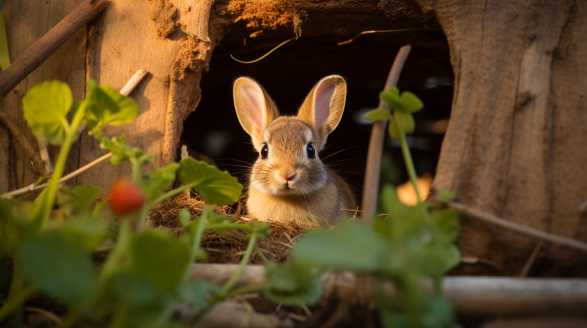
Key Takeaways
- Baby rabbits are born hairless, deaf, and blind, and rely on their mothers for survival.
- Intervention may be needed if the baby rabbits appear injured, weak, or their mother is deceased.
- Create a safe environment by providing a warm, quiet area for the baby rabbits.
- Feed them a proper formula for the first week, then gradually introduce leafy greens.
- Follow a feeding schedule and use gentle feeding techniques.
- If necessary, contact a wildlife rescue center for assistance in relocating the baby rabbits.
- When relocating, assess the situation, contact a rescue center, create a temporary shelter, and transport the rabbits safely.
- If you suspect abandonment, assess the situation, monitor the babies, and seek professional help if needed.
- Protect baby rabbits from predators by creating barriers, removing attractants, providing safe shelter, and gardening with safety in mind.
- Supervise pets and utilize sound and light to deter predators.
Feeding Baby Rabbits Found in Your Yard: A Complete Guide
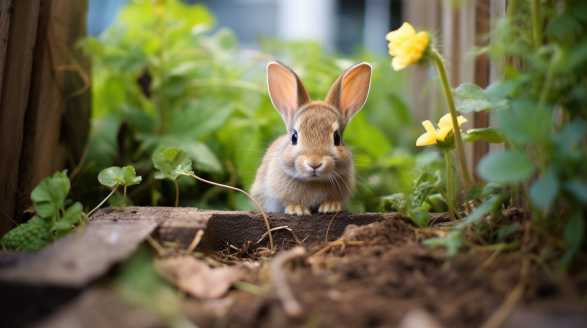
As a wildlife enthusiast and someone fortunate enough to have stumbled upon a litter of baby rabbits in my own yard, I understand the perplexity and concern that accompanies such a discovery. What do these little furballs eat?
I will provide you with all the necessary information and tips you need to successfully feed and care for baby rabbits found in your yard.
Understanding the Needs of Baby Rabbits
Before we look into their dietary requirements, it’s essential to grasp the unique needs of baby rabbits. These adorable creatures, also known as kits, are born hairless, deaf, and blind.
It’s important to remember that wildlife is best left undisturbed whenever possible. If you discover baby rabbits, it is usually best to observe them from a distance and allow their mother to care for them.
Determining if Intervention is Required
When deciding whether to intervene or not, it’s vital to consider a few factors. If the baby rabbits appear injured, weak, or are out of the nest for more than 24 hours, it may be necessary to step in.
Establishing a Safe Environment
If you’ve determined that intervention is necessary, the first step is to create a safe temporary haven for the baby rabbits. You’ll need a small, ventilated container lined with a soft cloth or paper towels.
Place the container in a warm, quiet area away from drafts, direct sunlight, and any household pets.
Feeding Baby Rabbits – What They Need
Now let’s tackle the important aspect of feeding these adorable creatures. Baby rabbits have unique dietary needs that differ from adult rabbits.
To adequately nourish baby rabbits, you’ll need to provide a combination of proper formula and specific leafy greens. Here’s a breakdown of what they need:
Proper Formula
- Purchase a commercial milk replacement formula specifically made for baby rabbits, as they have different nutritional requirements than other young animals like kittens or puppies.
- Prepare the formula following the instructions provided on the packaging carefully.
- Heat the formula to the recommended temperature, usually between 100-105°F (38-40°C). Use a thermometer to ensure accuracy.
- Dispense the formula into a small, shallow dish or a specialized nursing bottle designed for small animals.
Leafy Greens
- Introduce leafy greens to the baby rabbits’ diet when they are around two weeks old.
- Start with small amounts of a variety of fresh, rabbit-safe greens such as parsley, kale, or dandelion leaves.
- Gradually increase the amount of greens as the kits grow and approach weaning age.
- Make sure to thoroughly wash the greens before offering them to the rabbits.
Feeding Schedule and Techniques
Baby rabbits have specific feeding requirements, and it’s crucial to follow a proper schedule and technique to ensure their well-being.
Feeding Schedule
- For the first week of their lives, baby rabbits are exclusively fed milk replacement formula and do not consume greens or solid foods.
- From week two onwards, gradually introduce small amounts of fresh, rabbit-safe greens alongside the milk formula.
- As the baby rabbits grow, increase the number of times you feed them greens to offer a balanced diet.
- Consult with a veterinarian or wildlife expert to determine an appropriate feeding schedule for the kits, as it may vary depending on their age, weight, and overall health.
Feeding Techniques
- Dip the end of a small paintbrush or a soft cloth in the milk formula and gently touch it to the baby rabbit’s lips.
- Allow the kit to lap at the formula at their own pace, never force-feeding it or tilting its head back.
- Once the baby rabbits are old enough to consume greens, place the fresh leaves in their enclosure and allow them to eat independently.
- Monitor their eating habits and consult a professional if you notice any concerning behaviors or a decrease in appetite.
Consult with Professionals for Long-Term Care
While this guide aims to provide you with a complete understanding of feeding baby rabbits found in your yard, it’s important to remember that wildlife rehabilitation is best left to professionals. If you have any concerns about the health or well-being of the kits, reach out to local wildlife centers, veterinarians, or wildlife experts who can provide proper long-term care and rehabilitation.
Remember, observing wildlife can be a joyful experience, but we must always prioritize their well-being and natural habitat. Ensure you approach wildlife encounters with empathy and respect, allowing nature to take its course whenever possible.
Creating a Safe Environment for Baby Rabbits in Your Yard
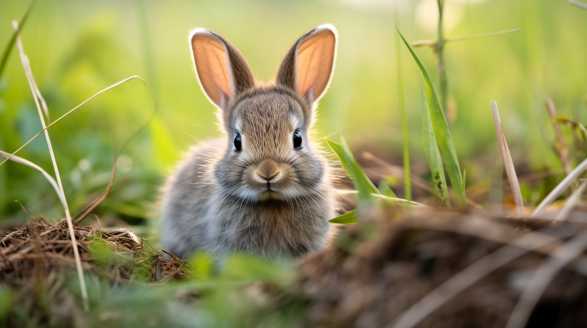
Are you a proud rabbit owner or plan to adopt a few adorable baby rabbits? Congratulations!
But as a responsible pet owner, it is crucial to create a safe environment for them to thrive in your yard. I will walk you through all the necessary steps and precautions you need to take to ensure the well-being and safety of your baby rabbits.
Understanding the Natural Habitat of Baby Rabbits
Before we dive into creating a safe environment, let’s understand the natural habitat of baby rabbits. In the wild, rabbits typically live in burrows, which provide them with shelter and protection from predators.
Baby rabbits are born helpless, so their survival largely depends on their mother’s care and the safety of their surroundings.
Preparing a Safe Space for Baby Rabbits
Choose a Fenced and Enclosed Area
Creating a fenced and enclosed area is essential to keep the baby rabbits safe from predators and ensure that they don’t wander off. Choose an area in your yard that is spacious enough for them to move around but small enough to minimize any potential risks.
Clear the Area of Hazards
Before introducing the baby rabbits to their new environment, it is crucial to clear the area of any potential hazards. Remove any sharp objects, toxic plants, or chemicals that may harm the rabbits.
Create a Secure Shelter
Providing a secure shelter is an important aspect of creating a safe environment for baby rabbits. You can build a small hutch or use a durable, predator-proof cage.
Line the floor of the shelter with soft bedding material, such as hay, to provide them with a comfortable resting area.
Ensuring Safety from Predators
Install Predator-Proof Fencing
To protect your baby rabbits from predators such as cats, dogs, or wild animals, it is crucial to install a predator-proof fence around the designated area. Ensure that the fence is buried at least 6 inches into the ground to prevent any digging from predators.
Secure the Shelter
Rabbits are vulnerable to predators even within their shelter. Make sure the hutch or cage is secure and predator-proof.
Consider reinforcing the doors and windows with strong wire mesh for added security.
Hide the Smell
Predators often locate prey through scent. To minimize the risk of attracting predators, remove any food or waste regularly.
Protecting from Extreme Weather Conditions
Provide Adequate Shade
Baby rabbits are sensitive to heat and direct sunlight. Make sure their shelter provides ample shade throughout the day.
Protect from Cold and Moisture
During colder months or in regions with harsh winters, it is important to protect the baby rabbits from extreme cold and moisture. Place the shelter in a draft-free area and provide extra bedding to keep them warm.
Help Regulate Temperature
Rabbits are unable to regulate their body temperature as effectively as humans or other animals. Provide them with a thermally controlled environment by using insulation material or placing the shelter in a well-ventilated area.
Ensuring a Healthy Diet and Water Supply
Provide a Balanced Diet
A healthy and balanced diet is crucial for the overall well-being of baby rabbits. Offer a variety of fresh vegetables, such as leafy greens, carrots, and herbs.
Consult a veterinarian or rabbit expert for a specific diet plan suitable for baby rabbits.
Fresh Water Supply
Water is essential for the proper hydration of baby rabbits. Ensure a constant supply of fresh water in a securely attached water bottle or dish.
Monitoring and Socialization
Regular Monitoring
Regular monitoring of your baby rabbits is essential to ensure their safety and well-being. Check their food and water supply daily, inspect their shelter for any issues, and observe their behavior for any signs of illness or distress.
Socialization and Handling
Baby rabbits thrive with human interaction and socialization. Spend time with them daily, gently stroke their fur, and talk to them in a calm and soothing voice.
Creating a safe environment for baby rabbits in your yard is all about understanding their natural habitat, ensuring their physical safety, protecting them from predators and extreme weather conditions, providing a healthy diet, and offering socialization. By following these guidelines and taking necessary precautions, you can provide a secure and nurturing space for your baby rabbits to grow and thrive, ensuring their happiness and well-being for years to come.
Identifying Abandoned Baby Rabbits in Your Yard: Signs and Next Steps
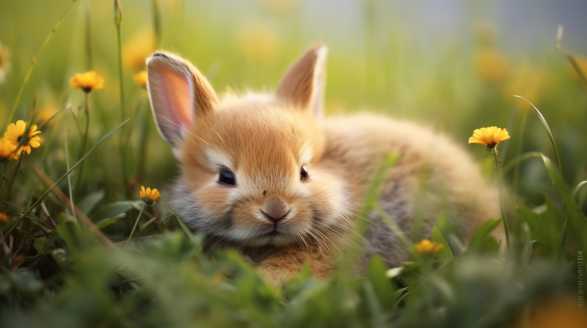
As a wildlife enthusiast and avid gardener, I have found myself encountering all sorts of fascinating creatures in my yard over the years. One of the most heartwarming encounters, without a doubt, was stumbling upon a litter of adorable baby rabbits.
I will guide you through the signs to look out for when identifying abandoned baby rabbits in your yard and provide you with the necessary next steps to ensure their well-being.
Signs of Abandonment
Before we jump into the steps to identify abandoned baby rabbits, let’s familiarize ourselves with some of the telltale signs that indicate their mother may have left them behind:
- Absence of the mother: The most obvious sign of abandonment is the absence of the mother rabbit. Keep an eye out for any sightings of her in the vicinity.
- Deteriorating health: Baby rabbits are highly dependent on their mother for nourishment and care. If you notice any signs of weakness, malnourishment, or illness, it may be an indicator that the babies have been abandoned.
- Isolation: If the baby rabbits are huddled together in a secluded area without any signs of their mother returning, it is likely that they have been left behind.
- Lack of stimulation: Baby rabbits require constant stimulation from their mother, and without her presence, they may appear inactive and unresponsive to external stimuli.
- Nesting disturbance: Another sign to watch for is any disruption to the nest. If it appears empty or disturbed, it could signify that the mother has abandoned her babies.
Next Steps: Assisting Abandoned Baby Rabbits
Once you have identified signs of abandonment, it is crucial to take action promptly to ensure the well-being of the baby rabbits. Follow these steps to provide them with the best chance of survival:
- Observe from a distance: Before intervening, give the rabbits some time to see if the mother returns. She may be out foraging for food or nearby, keeping a watchful eye. Observe from a distance for a couple of hours.
- Monitor the situation: If the mother does not return within a reasonable time frame, continue to monitor the situation while remaining discreet. It is possible that she may have faced an unfortunate circumstance.
- Confirm abandonment: To verify abandonment, create a makeshift indicator by placing twigs or thin sticks over the nest. Make sure they are arranged in a distinct pattern that allows you to see if the twigs have been disturbed.
- Seek professional advice: If you are uncertain about proceeding further or if the baby rabbits show signs of distress, contact a wildlife rehabilitator or a local animal rescue organization. They possess the knowledge and expertise to guide you through the necessary steps.
- Provide temporary shelter: In the meantime, you can provide temporary shelter for the baby rabbits by carefully constructing a small box lined with soft bedding material, such as hay or old towels. Ensure the box has proper ventilation and is placed in a quiet and warm area away from direct sunlight and drafts.
- Avoid unnecessary contact: While it may be tempting to handle the baby rabbits, it is best to avoid unnecessary contact. Human scent can be transferred to them, potentially disrupting their chances of being reunited with their mother in case she returns.
- Maintain warmth: Baby rabbits are highly sensitive to temperature changes. To keep them warm, you can place a heating pad set on low, wrapped in a towel, under one side of the box. This allows them to move freely between areas of different temperatures.
- Research local wildlife care facilities: Use your time to research nearby wildlife care facilities that specialize in rehabilitating baby rabbits or other wildlife. They can provide further guidance and may even be able to assist in the rehabilitation process.
Identifying abandoned baby rabbits in your yard can be a perplexing situation. By knowing the signs to look out for and understanding the necessary next steps, you can ensure the welfare of these precious little creatures.
Let’s join hands in providing a helping hand to these innocent beings who have found themselves in need of our care and compassion.
How to Safely Relocate Baby Rabbits in Your Yard to a Wildlife Rescue Center
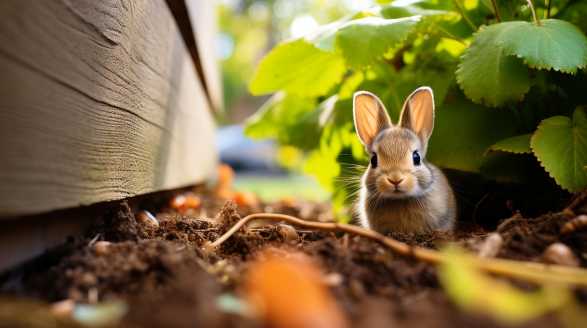
Are you faced with the adorable dilemma of finding baby rabbits in your yard and wondering how to safely relocate them to a wildlife rescue center? Well, you’ve come to the right place!
Understanding the Situation
Before we look into the steps of safely relocating baby rabbits, it’s important to understand why you might need to do this in the first place. There are several scenarios where it may be necessary to transport these little bundles of fluff to a wildlife rescue center:
- Disturbances in the nest: If you accidentally stumble upon a rabbit nest while gardening or doing yard work, you may inadvertently disturb the delicate balance of their habitat.
- Injured or orphaned rabbits: If you notice a baby rabbit with obvious injuries or in distress, it’s crucial to seek professional help to ensure their well-being.
Step 1: Assess the Situation
When you come across baby rabbits in your yard, the first thing to do is assess the situation. Look out for any signs of distress or potential dangers like predators nearby.
Remember, it’s essential not to touch or disturb them until you have a plan in place.
Step 2: Contact a Wildlife Rescue Center
Getting in touch with a local wildlife rescue center is vital. They have the necessary expertise to handle and care for baby rabbits.
They will provide you with instructions specific to your situation and guide you through the next steps.
Step 3: Prepare a Temporary Shelter
While waiting for instructions from the wildlife rescue center, it’s important to provide a temporary shelter for the baby rabbits. This can be as simple as a well-ventilated cardboard box lined with soft bedding, such as hay or shredded newspaper.
Step 4: Safely Transfer the Baby Rabbits
Once you receive guidance from the wildlife rescue center, it’s time to carefully transfer the baby rabbits to the specified transport container they recommend. This container will ensure the rabbits’ safety during transportation while keeping them comfortable.
Step 5: Transport the Baby Rabbits to the Wildlife Rescue Center
Follow the instructions provided by the rescue center for transportation. It’s crucial to handle the baby rabbits gently and minimize stress during the journey.
Step 6: Provide Additional Information to the Wildlife Rescue Center
Upon arrival at the wildlife rescue center, provide them with any additional information you observed about the baby rabbits. Remember those mental notes we made earlier?
Ensure you answer any questions they have regarding the nest, condition of the rabbits, or any other relevant details.
Relocating baby rabbits from your yard to a wildlife rescue center may seem like a daunting task, but with the right approach, it can be done safely and effectively. Remember, always prioritize their well-being and seek professional assistance whenever necessary.
So, go ahead and lend a helping hand to these furry friends in need!
What to Do if You Find Baby Rabbits in Your Yard: Step-by-Step Guide
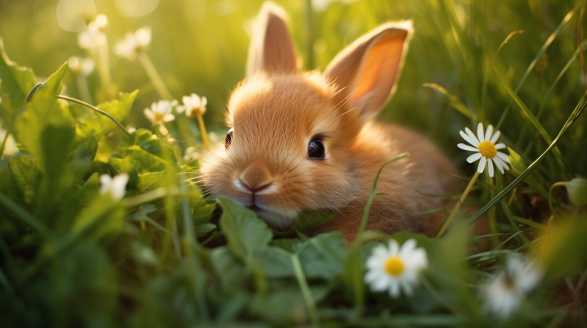
As an animal lover and someone who has encountered this situation firsthand, I understand the perplexity and concern you may be feeling when stumbling upon baby rabbits in your yard. Don’t worry; you’re not alone!
Understanding the Situation
Finding baby rabbits in your yard can be overwhelming, but it’s essential to remain calm and handle the situation delicately. Before taking any action, it’s crucial to understand a few key points:
- Wild rabbits – Baby rabbits found outdoor are usually wild, and their mothers typically leave them alone for most of the day. They tend to appear defenseless, but their mother is often nearby, watching over them from a distance.
- Nest location – Baby rabbits are usually found in shallow depressions in the ground, lined with fur and dried grass. These nests, known as “forms,” are designed to keep them well hidden from predators.
- Disturbance risks – Handling baby rabbits too often or incorrectly can lead to stress, injury, or abandonment by their mother.
Now that we have a basic understanding of the situation, let’s dive into the step-by-step guide on what to do if you find baby rabbits in your yard.
Step 1: Assess the Situation
- Observe from a distance – Before taking any action, keep a safe distance from the nest and observe it carefully for at least a few hours. This will help determine if the mother rabbit is returning to care for her babies.
- Look for signs of distress or abandonment – If the nest appears abandoned, the baby rabbits are injured, or you notice any signs of distress, it may be necessary to intervene.
Step 2: Assess the Babies
- Check for injuries – If you need to approach the nest, do so cautiously and gently. Observe the baby rabbits for any visible injuries, bleeding, or signs of illness. If you notice any concerns, it’s best to contact a wildlife professional or a local animal rescue for guidance.
- Assess their age and development – Baby rabbits’ eyes typically open around 10-12 days old, while their fur grows as they grow older. Assessing their age will give you a better understanding of how to proceed.
Step 3: Create a Protective Barrier
- Locate the nest edges – If you decide it’s necessary to provide temporary protection, you can create a protective barrier around the nest without moving it. Look for the edges of the nest and mark them discreetly, preferably with small twigs or flags.
- Use a lightweight fencing material – Fence off the area around the nest using a lightweight material such as chicken wire or garden fencing. Ensure that the fence is high enough to prevent other animals from reaching the nest.
Step 4: Monitor the Nest
- Avoid unnecessary disturbances – While the protective barrier is in place, refrain from unnecessary disturbances or handling the baby rabbits. This allows the mother rabbit to return undisturbed.
- Observe from a distance – Spend some time observing the nest from a distance, keeping an eye out for the mother rabbit’s return or any changes in the babies’ condition.
Step 5: Seek Professional Help if Necessary
- Contact a wildlife professional – If the mother rabbit hasn’t returned after 24 hours, the baby rabbits show signs of distress or illness, or they are noticeably injured, reach out to a local wildlife professional or animal rescue organization. They will guide you further on how to provide the best care for these delicate creatures.
Encountering baby rabbits in your yard can be an exciting yet confusing experience. Remember, the well-being of these baby rabbits depends on allowing their mother to care for them.
By following these steps and respecting the natural instincts of these adorable creatures, you can help give them the best chance of survival.
Protecting Baby Rabbits from Predators in Your Yard: Effective Strategies
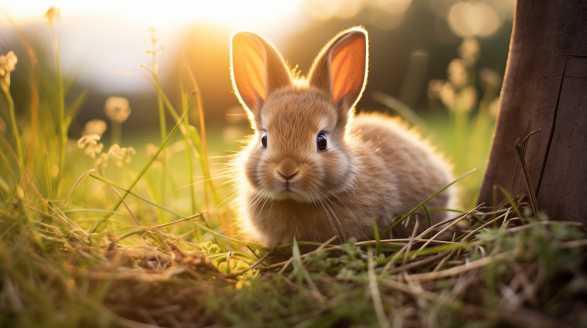
As a nature lover and someone who has a soft spot for furry creatures, I recently found myself perplexed by the challenges of ensuring the safety of baby rabbits in my yard. These adorable and fragile little creatures face numerous threats from predators lurking in the surrounding environment.
So, if you’re as passionate about safeguarding these innocent bundles of joy as I am, let’s dive into the rabbit hole of knowledge!
Understanding the Vulnerability of Baby Rabbits
Before we jump into protective strategies, it’s vital to grasp the vulnerability of baby rabbits during their early stages of life. When born, they are blind, hairless, and completely dependent on their mother for survival.
Identifying Common Predators
Various predators pose a significant threat to baby rabbits in your yard. Familiarize yourself with these potential attackers to better understand the urgency of implementing protective strategies:
- Dogs: Domestic dogs, particularly those not under proper supervision, can harm or kill baby rabbits.
- Cats: Both domesticated and feral cats are natural hunters and can pose a considerable risk.
- Birds of prey: Hawks, owls, and eagles have keen eyesight and swoop down to snatch small animals like baby rabbits.
- Snakes: Some snake species, such as garter snakes or rat snakes, have a fondness for small mammals.
- Raccoons: Raccoons are notorious for their curiosity and ability to wreak havoc on the wellbeing of baby rabbits.
- Foxes: These cunning predators are known for their hunting skills and pose a significant threat.
- Coyotes: In areas where coyotes roam, they can be a significant menace to baby rabbits’ safety.
Effective Strategies for Protecting Baby Rabbits
Now that we’ve identified the predators, let’s explore a range of effective strategies to protect our adorable little hoppers:
1. Creating a Barrier
Start by implementing a barrier around your yard to make it less accessible to predators. Here are a few tips to consider:
- Erect a sturdy fence around your yard, ensuring it is buried at least 6 inches underground to deter predators from digging under.
- Choose fencing materials that are difficult to climb, such as smooth or solid walls, hardware cloth, or brick.
- Install bird netting over vegetable gardens or other areas where rabbits frequent to prevent attacks from aerial predators.
2. Removing Attractants
Predators are often drawn to yards that provide plentiful food and hiding spots. Minimize these attractions by:
- Picking up fallen fruits, berries, or vegetables that can entice predators.
- Clearing brush piles, dense vegetation, and debris that provide hiding places for predators.
- Securing garbage cans with tight-fitting lids to prevent raccoons and other scavengers from being lured into your yard.
3. Providing Safe Shelter
Baby rabbits need a secure hiding place within your yard to avoid predators. Consider the following strategies:
- Creating dense brush or shrub piles that serve as shelter for rabbits while obscuring their presence from predators.
- Building rabbit-friendly burrows or installing specially designed wooden or plastic rabbit houses for them to seek refuge in.
4. Gardening with Safety in Mind
If you’re an avid gardener, it’s essential to ensure that your plants and their surroundings don’t pose a threat to baby rabbits. Here’s how:
- Avoid using pesticides or harmful chemicals that could indirectly harm baby rabbits by affecting their food sources.
- Choose rabbit-resistant plants, such as lavender, marigolds, or roses, to create a lesser attraction for predators.
5. Keep Pets Supervised
If you have pets, it’s crucial to ensure they don’t become threats to baby rabbits unintentionally. Follow these pet-related precautions:
- Keep dogs on leashes or restrict their access to vulnerable areas where baby rabbits might be hiding.
- Keep cats indoors, especially during the breeding season when rabbits are most vulnerable.
6. Gaining from the Power of Sound and Light
Predators are often deterred by unexpected noises or bright lights. Consider these strategies:
- Install motion-activated lights around your yard to startle any potential predators lurking in the shadows.
- Utilize noise-producing devices, such as wind chimes, ultrasonic animal deterrents, or even a strategically placed radio tuned to a talk station, as they can help repel predators.
By implementing these effective strategies, you can create a safe haven for baby rabbits in your yard, protecting them from potential predators. Remember, it’s essential to be vigilant and adapt your protective measures based on the specific predators in your area.
Conclusion
In conclusion, caring for and protecting baby rabbits found in your yard requires understanding their unique needs and taking appropriate steps to ensure their well-being. It’s crucial to assess the situation before intervening, as baby rabbits are often cared for by their mothers and may not require immediate assistance.
Creating a safe environment for baby rabbits involves providing a warm and quiet area for them, away from potential dangers and disturbances. Feeding them a proper formula and gradually introducing leafy greens into their diet is essential for their growth and nutrition.
If you need to relocate baby rabbits to a wildlife rescue center, it’s important to assess the situation, contact the right professionals, and create a temporary shelter for them. Safely transporting them to the rescue center ensures their safety and increases their chances of survival.
Identifying abandoned baby rabbits in your yard can be challenging, but observing from a distance and monitoring their behavior can help determine if intervention is necessary. Seeking professional help is crucial in providing the right care for them.
Lastly, protecting baby rabbits from predators requires creating barriers, removing attractants, providing safe shelter, and gardening with safety in mind. Supervising pets and utilizing sound and light to deter predators are effective strategies to keep them safe.
In the end, our main goal is to ensure the well-being and protection of these adorable creatures. By following the guidelines provided and seeking professional help when needed, we can play a vital role in caring for and safeguarding baby rabbits.
Frequently Asked Questions
What should I do if I find baby rabbits in my yard?
If you find baby rabbits in your yard, it is important to leave them alone. Mother rabbits usually only visit their babies a few times a day to avoid attracting predators.
How can I ensure the safety of baby rabbits in my yard?
To ensure the safety of baby rabbits in your yard, avoid attracting predators such as dogs or cats. Keep your pets indoors or supervise them when they are outside.
What do baby rabbits eat?
Baby rabbits, also known as kits, primarily nurse from their mother. Their diet consists of mother’s milk until they are around three weeks old.
Can I move baby rabbits to a safer location?
It is generally not recommended to move baby rabbits from their original location. The mother rabbit may have chosen that spot as it provides good shelter and camouflage.
How long do baby rabbits stay in the nest?
Baby rabbits usually stay in their nest, called a “form,” until they are around 3-4 weeks old. They will venture out of the nest when they are stronger and more independent.
What should I do if I accidentally disturbed a baby rabbit nest?
If you accidentally disturbed a baby rabbit nest, it is crucial to restore it to its original condition. Place any displaced grass, fur, or leaf material back over the nest and try to recreate the original shape.
Should I touch or handle baby rabbits?
It is best to avoid touching or handling baby rabbits unless it is absolutely necessary. Rabbit kits are highly susceptible to stress, and excessive handling could cause harm. Only intervene if the kits are injured, sick, cold, or in immediate danger. In such cases, it is recommended to contact a local wildlife rehabilitator for assistance.
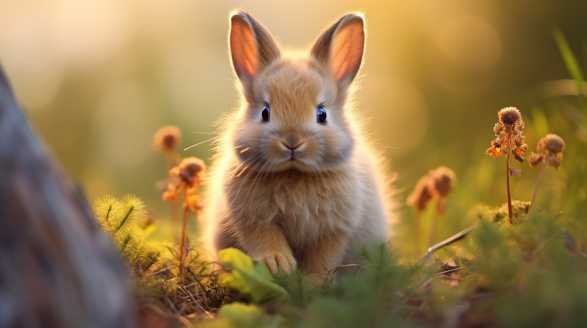
All About Baby Rabbits
Introduction Ready to learn all about Baby Rabbits? Join me on an journey as we explore the wonderful world of baby rabbits. From their adorable twitching noses to their binky-filled antics, these little furballs are sure to melt your heart and leave you smiling from ear to ear. Now, I must confess, I am head […]
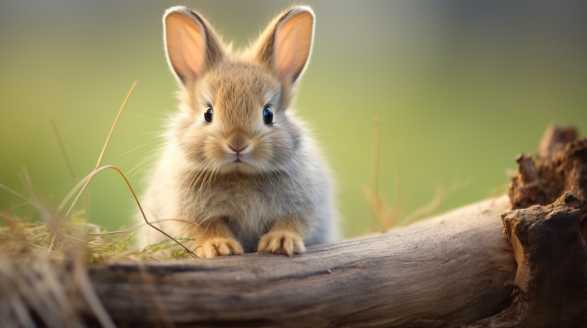
What Are Baby Rabbits Called
What are baby rabbits called? Let’s find out. Baby rabbits are commonly called kits or bunnies. These adorable furry creatures are born with closed eyes and no fur, but quickly grow into bouncy and lovable companions. Their playful nature and small size make them extra irresistible, captivating the hearts of both children and adults alike. […]
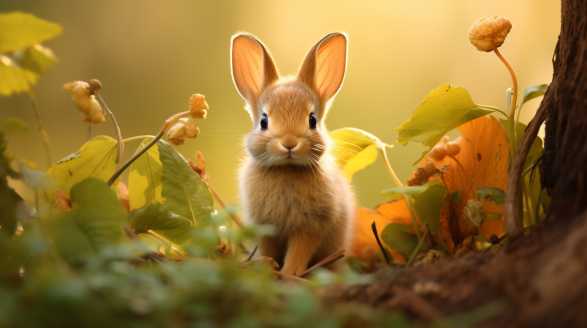
When Do Rabbits Stop Growing
Introduction When do rabbits stop growing? Let’s find out. Picture this: a cozy burrow, filled with soft hay and the pitter-patter of little paws. It’s here that we witness the magical journey of a cute baby bunny transforming into a majestic adult rabbit. We’ll dive deep into the secrets of rabbit growth, exploring the signs […]
